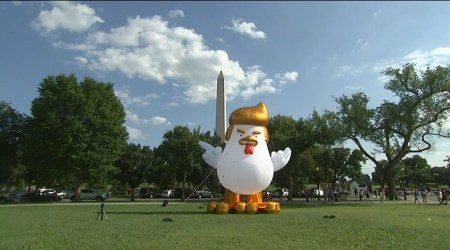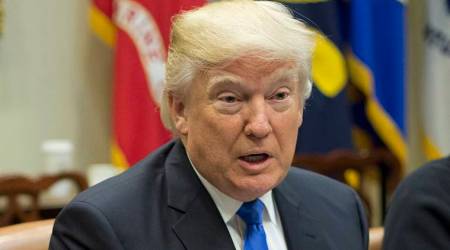 North Korean leader Kim Jong Un, left, and U.S. President Donald Trump. Threatening language between the Washington and Pyongyang is flaring. (AP Photo)
North Korean leader Kim Jong Un, left, and U.S. President Donald Trump. Threatening language between the Washington and Pyongyang is flaring. (AP Photo)
Tensions between the United States and North Korea heightened on Wednesday, after President Donald Trump warned Pyongyang it would face “fire and fury” if it threatens Washington. His statement, made in the backdrop of North Korea’s ballistic missile and nuclear programmes, prompted the latter’s state media to retaliate saying it was “carefully examining” how to strike Guam, a US military base.
“North Korea best not make any more threats to the United States. They will be met with fire and fury like the world has never seen,” Trump was quoted as saying by Reuters at the Trump National Golf Club in New Jersey. Last week, in a unanimous decision by members of the United Nations Security Council (UNSC), fresh sanctions were imposed on North Korea regarding its missile tests. Pyongyang has never acknowledged these sanctions.
In response to Trump’s statement, state-run KCNA on Wednesday said a plan would be put in place on the orders of President Kim Jong Un. The news agency quoted a military spokesperson who said they would could carry out a pre-emptive operation if there were signs of US provocation, reported Reuters. On Thursday, ramping up pressure against the US, KCNA claimed it was finalising plans to fire four intermediate-range missiles over Japan, which is expected to land 30-40 kilometres away from Guam. “Sound dialogue is not possible with such a guy bereft of reason and only absolute force can work on him,” it read, according to Reuters.
North Korea’s nuclear missiles
Despite the sanctions imposed on North Korea, the country conducted two two Intercontinental ballistic missile (ICBM) tests last month. It had only carried out two nuclear bomb tests last year. In response the recent economic sanctions, North Korea had warned “US will pay a price”.
North Korea’s threats, which have raised concerns globally, has resulted in the U.S. deploying 28,500 troops in South Korea and 54,000 personnel in Japan.
 This photo distributed by the North Korean government shows what was said to be the launch of a Hwasong-14 intercontinental ballistic missile, ICBM, in North Korea’s northwest, Tuesday, July 4, 2017. (Photo via AP)
This photo distributed by the North Korean government shows what was said to be the launch of a Hwasong-14 intercontinental ballistic missile, ICBM, in North Korea’s northwest, Tuesday, July 4, 2017. (Photo via AP)
Where is Guam?
Guam, an island in the western pacific, is a U.S. military base and is home to around 163,000 people. It includes a submarine squadron, an air base and a Coast Guard group. It is located over 3,000 kilometres to the southeast of North Korea.
Guam Governor Eddie Calvo, however, has refuted any heightened threat from the North.
The Homeland Security Advisor of Guam, George Charfauros, “The US department of defence is monitoring the situation very closely and is maintaining a condition of readiness,” reported Independent.
Meanwhile, to show Guam’s strategic importance, the U.S. on Monday deployed two B-1 bombers to fly from Guam over the Korean Peninsula as part of its “continuous bomber presence”, an U.S. official told Reuters.
 (Source: Reuters)
(Source: Reuters)
What’s Japan’s position in all this?
Taking note of the war of words between the two leaders, Japan’s Defence Minister Itsunori Onodera said the country can legally intercept any missile from North Korean headed towards Guam if it posed as an existential threat, reported Kyodo news service.
Japanese fighters conducted joint air drills with U.S. supersonic bombers in Japanese skies close to the Korean peninsula on Tuesday, Japan’s Air Self Defence Force said.
However, according to a report in Reuters, experts believe Japan doesn’t have the capability to shoot down any missile.
 The front entrance sign for Anderson Air Force base is seen in Yigo, Guam. (AP Photo)
The front entrance sign for Anderson Air Force base is seen in Yigo, Guam. (AP Photo)
(With inputs from agencies)

